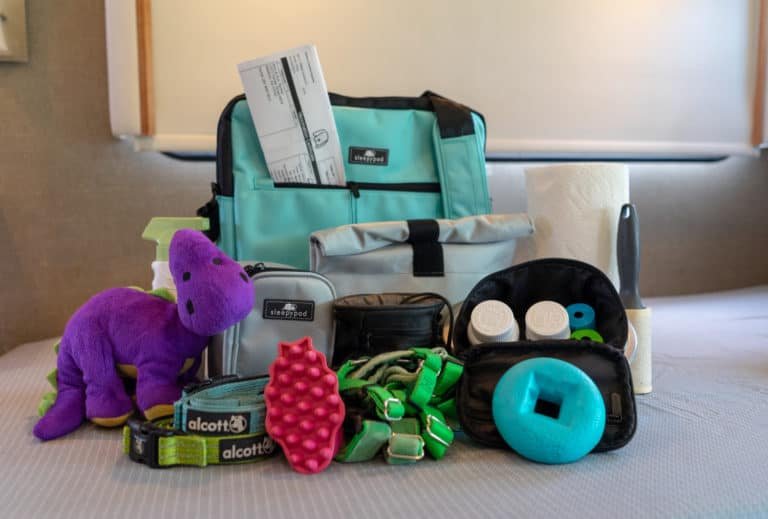Moving can be an overwhelming experience—there’s packing, organizing, and adjusting to a new space. But when you have pets, the process can feel even more complicated. Cats, dogs, and other pets have their own routines and needs, which means a move requires a bit more planning and consideration. Whether you’re moving across town or relocating to another country, these tips will help ensure a smoother transition for both you and your furry companions.
Preparing for the Big Move
The key to a stress-free move with pets is planning—starting as early as possible. Pets are creatures of habit, and the changes leading up to the move can make them feel unsettled or anxious. It’s not unusual for your dog or cat to become clingy or act out as they sense the disruption in their environment. So, the sooner you begin preparations, the better.

Create a Consistent Environment
Try to maintain your pet’s routine as much as possible in the days leading up to the move. Keep feeding times and walks consistent, and make sure they still have their familiar spots for eating and resting. If you’re packing, avoid using their bed or favorite toys as packing materials until the last minute, so your pet doesn’t associate these items with the upheaval. If possible, assign one person in the household to be responsible for your pet’s care, ensuring they have a calm and familiar presence throughout the process.
Set Up for Moving Day
On moving day, your pet’s well-being should be a priority. For local moves, consider sending your pet to a friend or pet daycare for the day. This can keep them out of the chaos and give you the freedom to focus on logistics. If you’re traveling by car, plan your route ahead of time and find pet-friendly accommodations where both you and your pet can rest comfortably along the way. Always double-check hotel policies to confirm they welcome pets.
For longer distances or international moves, air travel may be necessary. Be sure to book flights well in advance, as airlines typically have limited space for pets. Contact the airline to inquire about their specific pet policies, and gather any required documents, such as health certificates or vaccination records, that your pet will need to board. If you’re moving abroad, you may need additional paperwork or assistance from a pet transportation service.
Keep Identification Up-to-Date
No matter how you’re moving, it’s essential to ensure your pet’s identification is current. Make sure their ID tags include your cell phone number and that they’re microchipped for added security. If your pet gets lost during the move, having this updated info will help you reunite quickly.
Health and Legal Considerations
Vet Check-Up
Before the big day, take your pet to the vet for a check-up. This is especially important if you’re moving across state lines or to another country, as many places have specific vaccination or health requirements. Most states or countries require proof of rabies vaccination, while others may need a general health certificate that confirms your pet is free of infectious diseases. Be sure to carry these documents with you during your move.

If your pet suffers from motion sickness, ask your vet about remedies or medications that can help. Travel can be hard on animals, but with the right prep, you can ease their discomfort.
Understand Local Laws
Different regions may have unique pet laws or regulations. For example, Hawaii has stringent quarantine laws for pets entering the state. Similarly, some states may have breed-specific legislation that bans or restricts certain dog breeds. Research the laws in your new area and make sure you’re in compliance before arriving. The last thing you want is to encounter legal issues because of your pet’s breed or vaccination status.
Moving by Car: Road Trip Tips
If you’re moving locally or driving to your new destination, the car is likely your primary mode of transport. While this can be the most affordable and flexible option, it also requires some planning.
Travel in Comfort
Make sure your pet’s travel setup is secure and comfortable. Use a crash-tested carrier, crate, or seat belt harness to keep your pet safe and prevent distractions while driving. Short trips beforehand will help your pet get used to their carrier, and don’t forget to deactivate the airbag on the seat where your pet will be riding.
Pit Stops and Breaks
When driving long distances, plan frequent stops to allow your pet to stretch, hydrate, and use the bathroom. Portable water and food bowls are great to keep on hand, especially for quick stops. If you’re stopping for an overnight stay, choose pet-friendly hotels, and make sure your pet has their favorite blanket or toys to feel more at home.
Road Trip Safety
Always attach your pet’s leash before opening the car door to prevent them from darting off in an unfamiliar area. Keeping them on a leash at all times during stops helps keep them safe and gives you more control in case of surprises.
Air Travel with Pets
Air travel comes with its own set of challenges. Not all pets are suited for flying, especially those in the cargo hold, so consider your options carefully. Cats and small dogs that fit in an airline-approved carrier can travel in the cabin with you, while larger pets may need to fly as cargo.

Research Airlines
Different airlines have varying rules for pet travel, so make sure to compare policies and fees. Book your pet’s flight well in advance, and ensure they’re comfortable with the carrier. Weather conditions can also affect whether or not animals are allowed to travel in the cargo hold, so be prepared for potential delays or changes to your travel plans.
Avoid Sedating Your Pet
Many pet owners consider sedating their pets for air travel, but veterinarians generally recommend against it. Sedatives can affect a pet’s ability to regulate their body temperature and breathe properly, especially in the cargo hold. Consult your vet for safer options if your pet is particularly anxious about flying.
Packing for Your Pet’s Journey
Just like us, pets need their own travel essentials. Here’s a checklist of what to bring for your furry companion:

- Food and Treats: Don’t forget the can opener if you’re traveling with canned food!
- Water and Bowls: Collapsible or anti-spill bowls are perfect for road trips.
- Health Records and Identification: Keep all necessary documents handy.
- Comfort Items: A favorite bed, blanket, or toy can make new places feel familiar.
- First-Aid Kit: For any bumps or bruises along the way.
- Waste Bags: You’ll need these for bathroom breaks during travel.
Settling In
Once you’ve arrived at your new home, help your pet adjust by setting up a quiet space where they can relax. This familiar area, complete with their bed, toys, and any comfort items, will help them feel safe. Over time, encourage them to explore their new environment at their own pace, always keeping their routine intact.
As you settle into your new home, don’t forget to find a local vet and transfer your pet’s medical records. Establishing a relationship with a new vet early on will give you peace of mind in case of emergencies.
Conclusion
Moving with pets is no easy feat, but with careful planning and a little patience, you can ensure a smooth transition for everyone in the family. By keeping your pet’s routine consistent, preparing for travel, and staying on top of health and legal requirements, you can minimize stress and enjoy the adventure of starting fresh in a new home—together.


